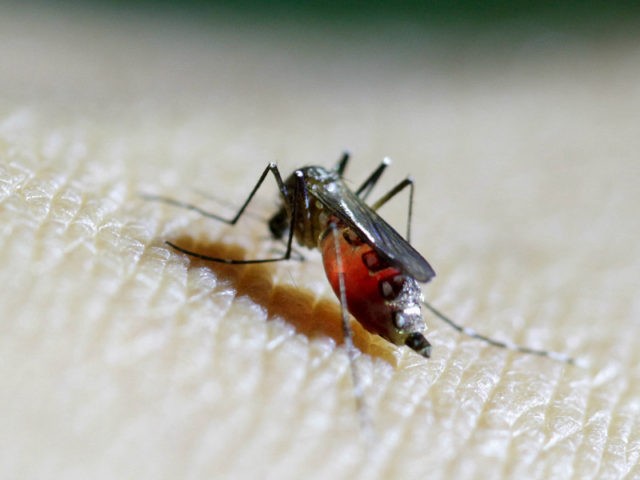The mosquitos that can carry the Zika virus have reportedly appeared in 129 California cities. With cold winter weather the only major obstacle to the Zika virus becoming America’s first pandemic since the 1957 Asian Flu, ground zero for a potential pandemic is now the West Coast.
The California Department of Public Health released an emergency warning on March 31 that two invasive (non-native) mosquito species named Aedes aegypti (the yellow fever mosquito) and Aedes albopictus (the Asian tiger mosquito), which are known to carry Zika, dengue, chikungunya and yellow fever, have now been found in 10 California counties including Fresno, Kern, Imperial, Los Angeles, Madera, Orange, Riverside, San Bernardino, San Mateo and Tulare.
Unlike most of California’s native mosquito species, Aedes aegypti and Aedes albopictus only bite during the daytime. They are distinguished by their small size, and by their black and white stripes on their back and legs.
Aedes aegypti and Aedes albopictus are now common in Mexico, Central and South America, the Caribbean, and Asia. But the only documented U.S. cases of viral transmission from a mosquito to a human took place in South Florida and Brownsville, Texas last year.
The Center for Disease Control’s computer models correctly predicted that virus transmission would almost stop during winter due to the Zika vector mosquito populations drastically shrinking. They may, however, resurface in late next spring.
Those same simulation models expect California to be the ideal petri dish for a Zika virus pandemic, thanks to the combination of Aedes aegypti and Aedes albopictus mosquitos’ ability to lay their eggs in any small natural or artificial container holding water, plus historically heavy California rainfall and snowpack runoff expected to last until the end of summer.
The California Department of Public Health’s Division of Communicable Disease Control has “laboratory confirmed” a total of 529 cases of Zika infections in the state as of March 31. There were 2 new Zika infections reported in the last week, and officials expect the warming weather to accelerate the spread of the virus.
California has confirmed that 104 pregnant women contracted Zika, and 5 babies were born in the state with the virus. Birth defects directly related to Zika include microcephaly; brain damage from cranial calcium deposits; excess fluid in the brain cavities; brain damage affecting nerves and hearing; and inflexible muscles and bone deformations.
Although researchers have not confirmed any transmissions of Zika virus from mosquitos within the state, the virus is only symptomatic for only 18 percent of cases. Although Zika can cause severe sickness and death in adults, most infected individuals only suffer from mild flu-like fever, joint pain, muscle pain, headache and red eyes. Consequently, the Zika virus infection rate is drastically underreported.
But in an alarming development, there are six confirmed Zika infections in California women who acquired the virus through sexual transmission from an individual that traveled to nations where the World Health Organization already declared a Zika virus pandemic.
Hot zones for California Zika cases appear to be areas known for heavy tech immigration flows, with 155 in Silicon Valley and 150 in Silicon Beach.
The first human experimental Zika vaccine testing began in Houston earlier this week, and will soon begin in Miami and San Juan, Puerto Rico. Research scientists at the National Institute of Allergy and Infectious Diseases, which developed the vaccine, hope by June to have enrolled 2,000 volunteer test subjects across the Americas. Initial results will not be available until late 2017, and a vaccine will not be widely available for at least another two years.

COMMENTS
Please let us know if you're having issues with commenting.